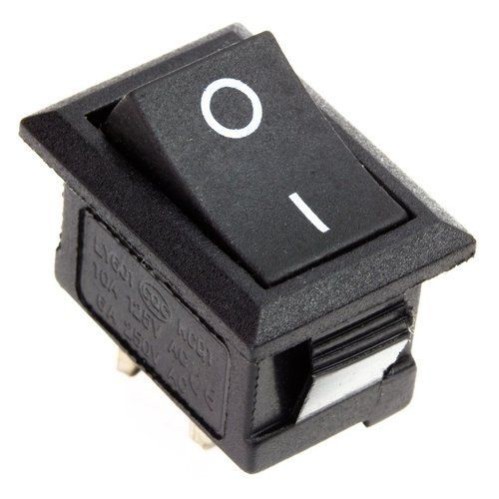








DPDT SWITCH
Understand The Fundamentals Of Switch Poles And Throws ... What is a DPDT switch? A Double Pole Double Throw (DPDT) switch consists of six terminals, two of which are independent input terminals. Each of the poles can complete two different circuits. In other words, each input terminal connects with two output terminals, and all four output terminals are separate.
₹ 26 ₹49
49
Add FAQ
A DPDT switch, or Double-Pole Double-Throw switch, is a type of electrical switch that can control two separate circuits and switch between two different positions for each circuit. This versatile switch is commonly used in various electronic and electrical applications for toggling between different states or functions.
Key Features:
-
Double-Pole:
- Two Circuits: Controls two separate circuits simultaneously. Each pole can switch its circuit between two different states or paths.
-
Double-Throw:
- Two Positions: Each pole has two positions (often labeled as ON-ON or ON-OFF-ON), allowing the switch to route the circuit to one of two different outputs.
-
Mechanical Operation:
- Physical Toggle: Typically operated by a physical lever or button that toggles between the two states.
-
Contacts:
- Configuration: Each pole has two contacts, and the switch can connect each contact to one of two outputs, providing a total of four possible configurations.
Applications:
-
Electronic Circuits:
- Signal Routing: Used to switch signals between different paths in electronic circuits.
- Function Selection: Allows users to select between different functions or modes.
-
Power Switching:
- Dual Circuit Control: Used to control two separate power circuits from a single switch.
- Reversing Motor Direction: Common in motor control applications to change the direction of a DC motor.
-
Audio and Video Equipment:
- Source Selection: Used to switch between different audio or video sources.
-
Control Panels:
- Mode Selection: Allows selection between different operational modes or configurations in control panels.
Types of DPDT Switches:
-
On-On Switch:
- Switches Between Two Positions: Each position connects to a different circuit path.
-
On-Off-On Switch:
- Three Positions: One position is for OFF, and the other two are for connecting to different circuits.
-
Center-Off Switch:
- Three Positions: Includes a central OFF position, with the other two positions connecting to different circuits.
Selecting the Right DPDT Switch:
-
Current Rating:
- Amp Rating: Choose a switch with a current rating suitable for your application. Ensure it can handle the load of the circuits it controls.
-
Voltage Rating:
- Voltage Compatibility: Ensure the switch can handle the voltage of the circuits.
-
Switch Type:
- Mechanical: Choose between different mechanical configurations (e.g., toggle, rocker, slide) based on user preference and application requirements.
-
Mounting Type:
- Panel Mount: Check if the switch is suitable for panel mounting or if it requires through-hole or surface-mount installation.
-
Contact Configuration:
- Wiring: Verify the switch’s wiring and contact configuration to ensure compatibility with your circuit design.
Wiring and Usage:
-
Wiring the Switch:
- Connections: Each pole has two inputs and two outputs. Connect the input terminals to the power source or signal lines and the output terminals to the corresponding circuits.
- Configuration: Follow the switch’s datasheet or diagram to ensure correct wiring for your specific application.
-
Testing:
- Verify Operation: Test the switch to ensure it properly toggles between the different circuits or positions.
0 Reviews For this Product





.jpg&width=225&quality=80)

.jpg&width=225&quality=80)








